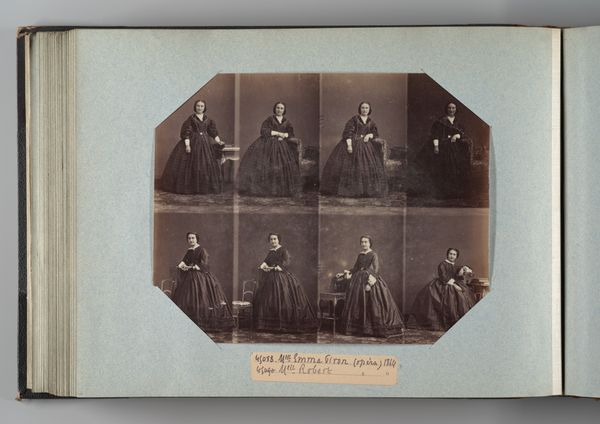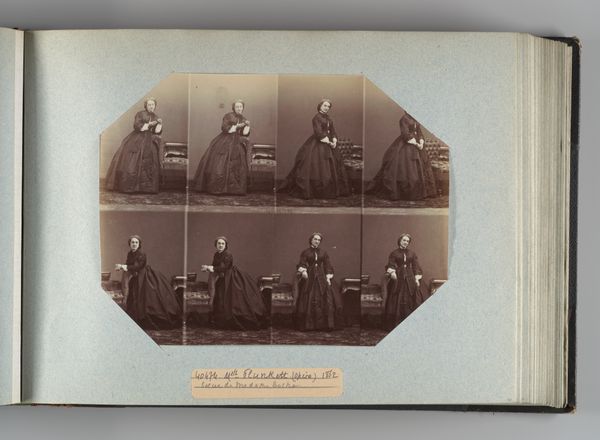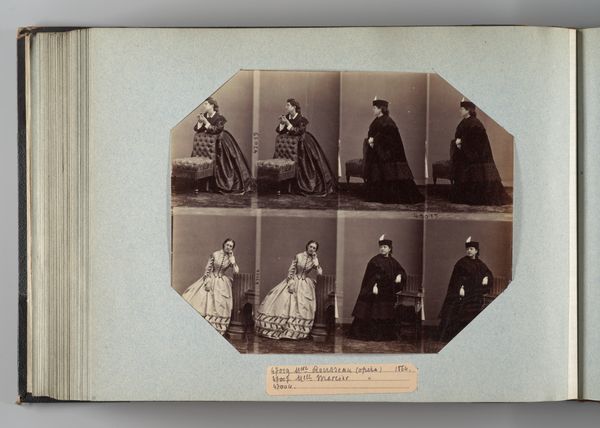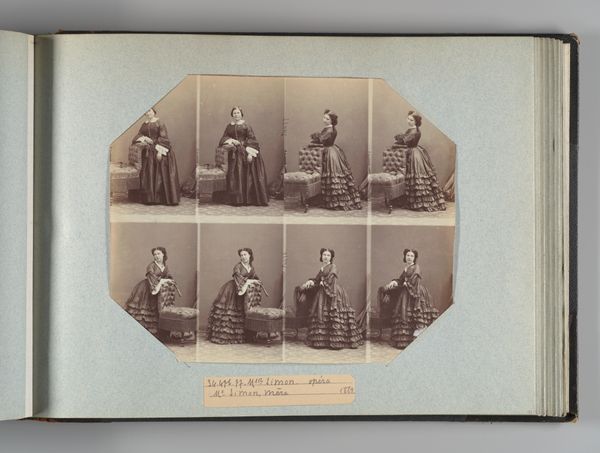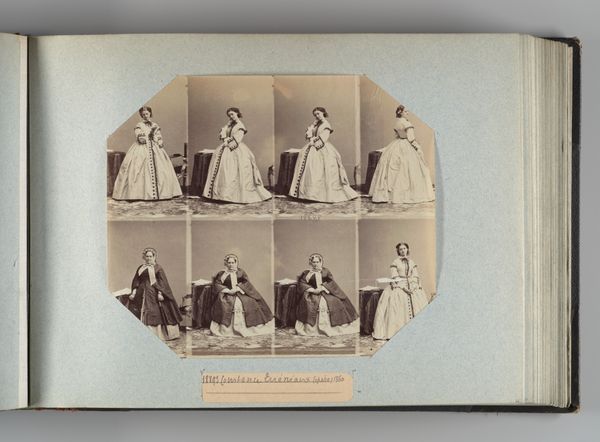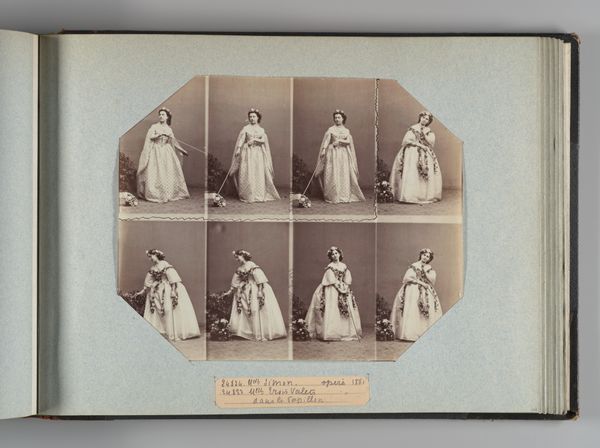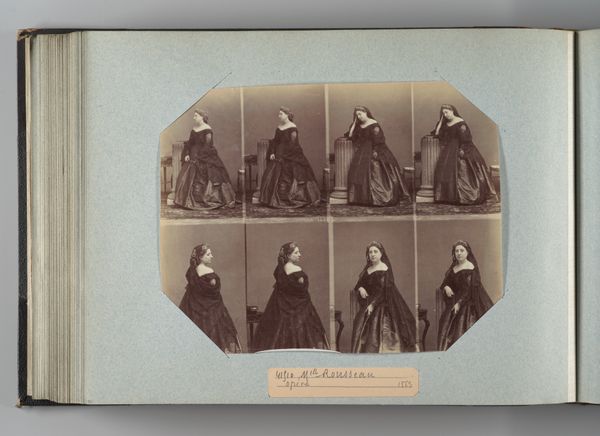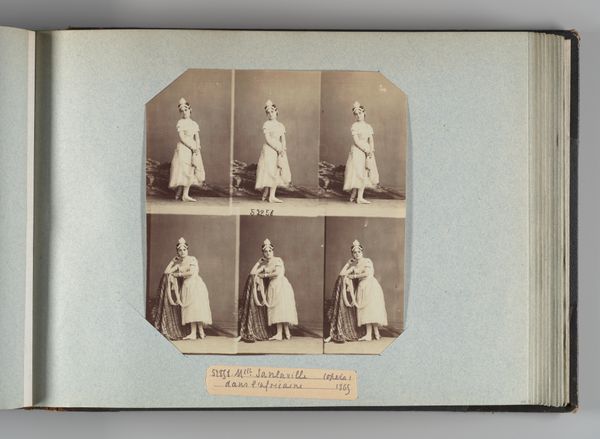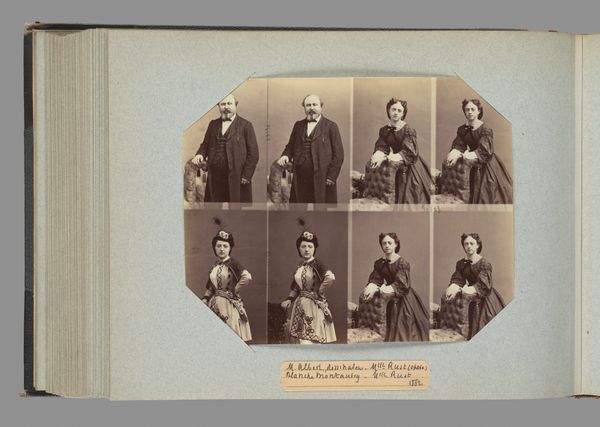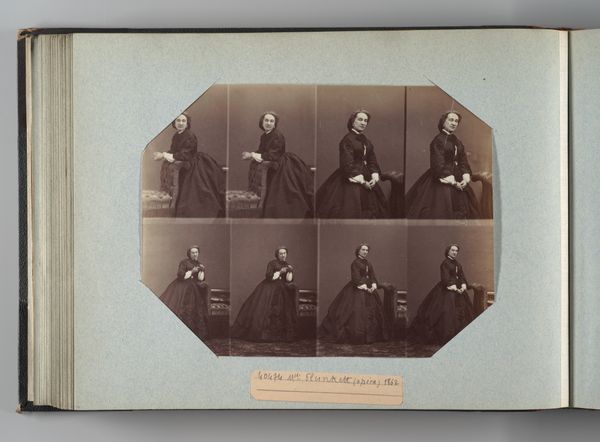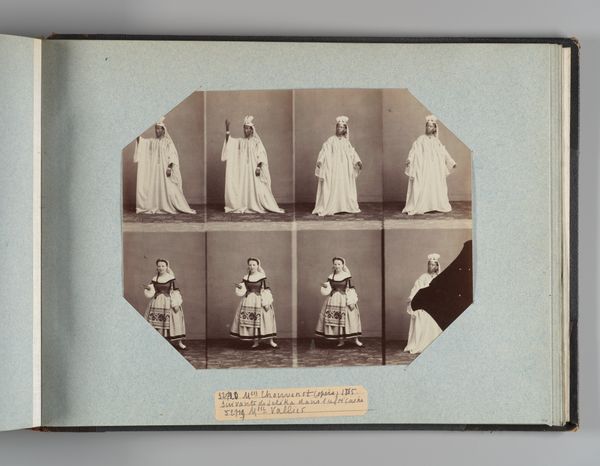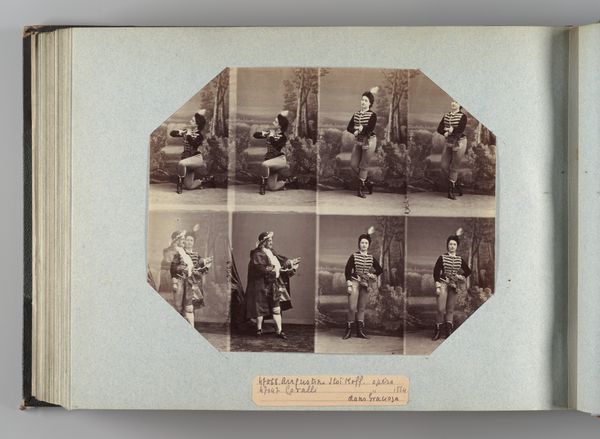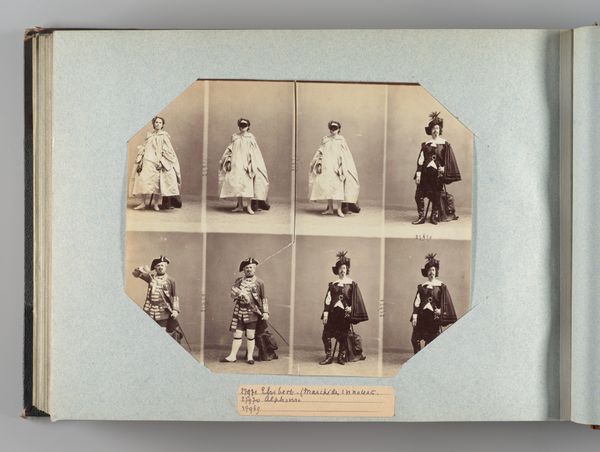
photography, albumen-print
#
portrait
#
photography
#
albumen-print
Dimensions: Image: 7 3/8 × 9 1/4 in. (18.8 × 23.5 cm) Album page: 10 3/8 × 13 3/4 in. (26.3 × 35 cm)
Copyright: Public Domain
Editor: This is "Mlle Savel," an 1858 albumen print photograph by André-Adolphe-Eugène Disdéri, housed at The Met. The poses are so formal, and yet there's a certain artistry in the repetition. How do you approach something like this? Curator: This is a fascinating example of early commercial photography. I see Disdéri as shrewd businessman, standardizing portraiture through the carte-de-visite format. Notice the serial, almost mass-produced feel – albumen printing allowed for multiple copies from a single negative, driving down costs. What do you think that did to the notion of the "artistic" photograph? Editor: So, you're saying the shift toward cheaper, more reproducible methods impacted its perceived value? Like, photography went from bespoke artwork to consumer good? Curator: Precisely. Consider the sitter too, Mlle Savel. Her dress isn't just an aesthetic choice; it represents industrial textile production and the growing availability of fashionable clothing. The very *stuff* of the portrait – the albumen, the paper, the inks – all speak to burgeoning industries and access. Do you think this cheap, accessible image democratized portraiture or cheapened it? Editor: I guess it's both, really. More people could own portraits, but maybe the focus shifted from artistry to affordability and availability. The artistry might be more in the system of production and distribution than in a single, unique print. Curator: Exactly! It asks us to reassess how we define "art" when labor and modes of distribution become integral to its existence. The act of mass production inherently challenges the definition of uniqueness within art, even with the artistry of photography. Editor: I never really considered the materiality of photography itself as part of the artwork's meaning. Thank you for showing me that it also bears significance, reflecting the social context of the piece's production and consumption. Curator: Absolutely! This has been great, thinking through those shifts.
Comments
No comments
Be the first to comment and join the conversation on the ultimate creative platform.
